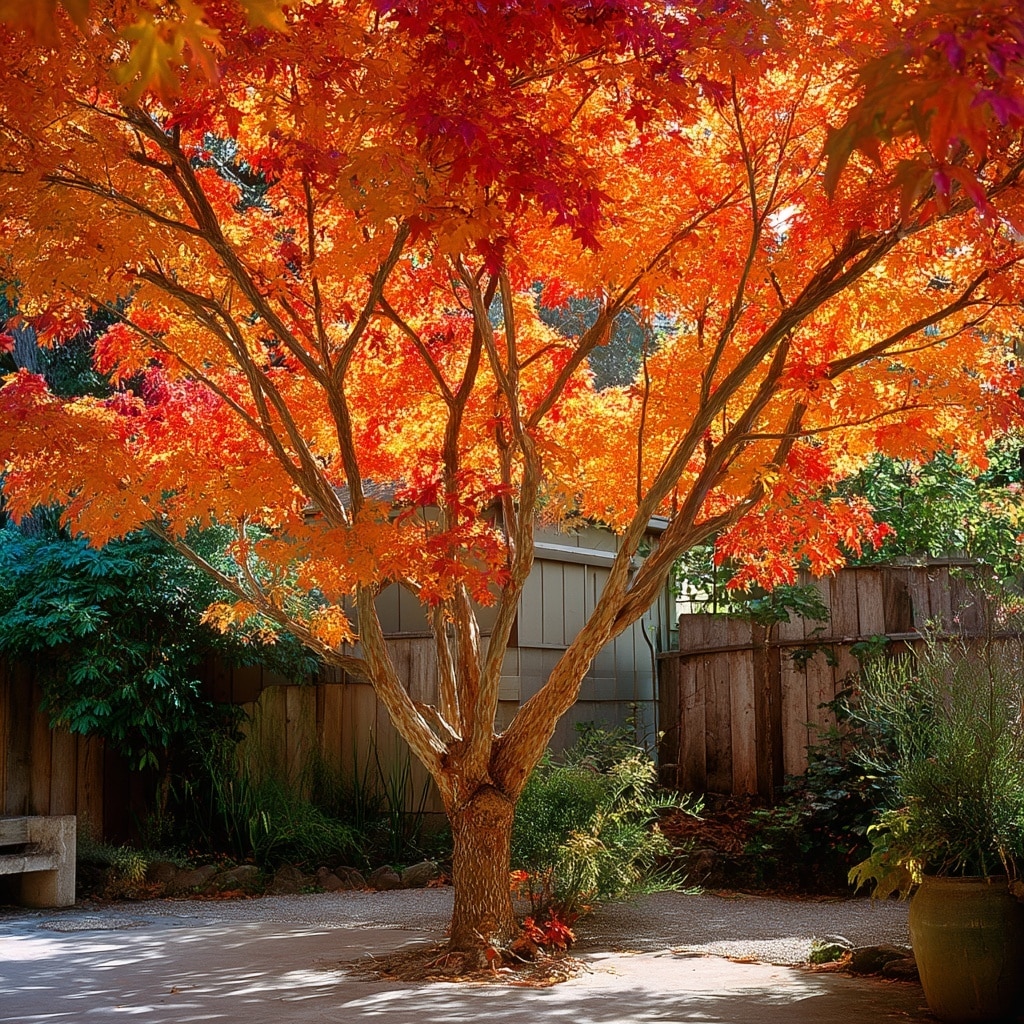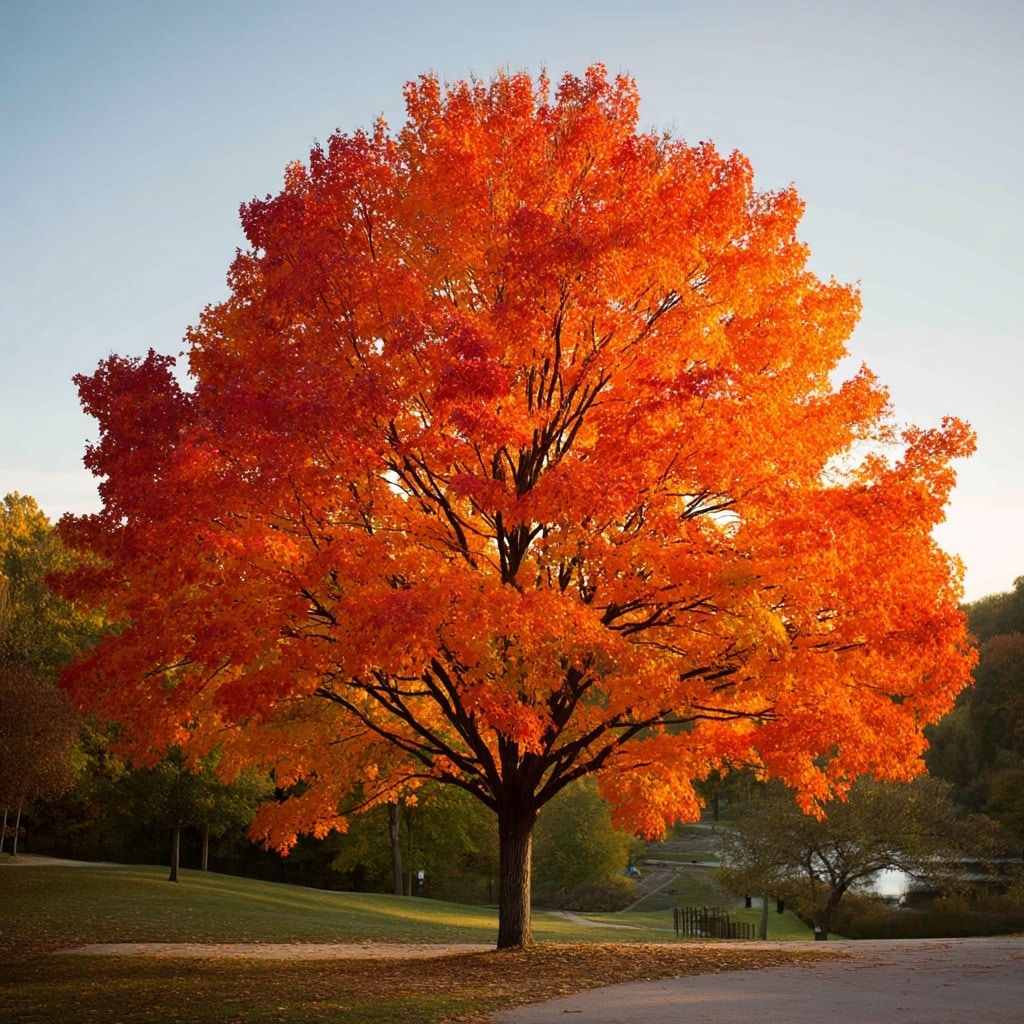Fall tree color is one of the most breathtaking signs that autumn has arrived. Whether you’re designing a new landscape or adding seasonal beauty to your backyard, planting a fall tree is a rewarding way to bring rich shades of red, gold, and orange into your outdoor space. Some trees glow with golden foliage, while others dazzle with fiery crimson leaves—and many offer added interest with textured bark or berries that attract wildlife.
In this guide, we’ll walk through twelve of the best fall trees that not only deliver stunning autumn displays but also thrive in a variety of hardiness zones. From compact options for small yards to towering specimens that become focal points, there’s a perfect fall tree for every garden style.
Table of Contents
1. Sugar Maple (Acer saccharum)
When it comes to choosing a fall tree that delivers maximum color impact, the sugar maple stands tall—literally and figuratively. This classic hardwood is famous for its brilliant blend of red, orange, and yellow hues, often showing multiple colors on a single leaf. It’s a staple in northeastern landscapes and a favorite for anyone wanting that storybook autumn look.
In addition to its dazzling color, sugar maple makes a strong shade tree thanks to its upright, rounded shape. It’s best suited for larger yards, where its impressive size can be fully appreciated. This tree also contributes to ecosystem health by supporting native wildlife and offering sap for maple syrup production in colder climates.
- Hardiness Zones: 3–8
- Mature Size: 55–75 ft tall, 30–50 ft wide
- Best For: Classic autumn foliage, large landscapes
2. Serviceberry (Amelanchier spp.)

If you’re looking for a fall tree that offers interest in every season, serviceberry is a standout choice. This adaptable small tree—or large shrub—delivers delicate white flowers in early spring, edible berries by summer, and vibrant orange to red foliage in the fall. The cultivar ‘Autumn Brilliance’ lives up to its name, offering exceptional autumn color.
Serviceberry is a great option for smaller yards or as a multi-season accent in mixed borders. It also attracts pollinators in spring and birds in late summer, making it as functional as it is beautiful.
- Hardiness Zones: 4–9
- Mature Size: 15–25 ft tall and wide
- Best For: Year-round interest, smaller landscapes
3. Red Maple (Acer rubrum)
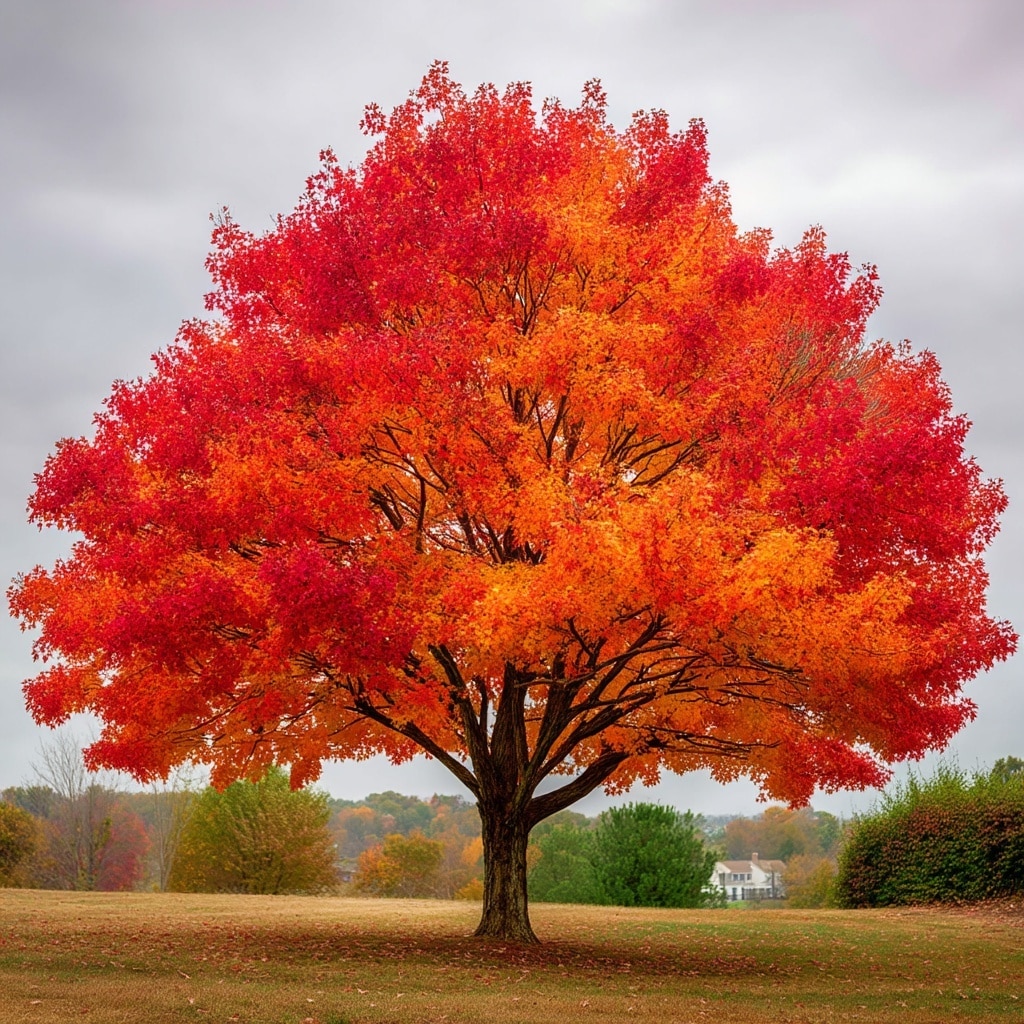
A fast-growing favorite, the red maple is a fall tree that lives up to its name when autumn rolls in. Its leaves turn vivid shades of scarlet and orange, creating a fiery canopy that adds instant curb appeal. Cultivars like ‘Red Sunset’ and ‘October Glory’ are especially prized for their intense fall coloration.
Red maples adapt well to various soil types and grow quickly—often adding over three feet of height per year. They’re an ideal choice for homeowners seeking both beauty and shade in a relatively short time.
- Hardiness Zones: 3–9
- Mature Size: 40–50 ft tall, 25–40 ft wide
- Best For: Fast growth, brilliant red foliage
4. Ginkgo (Ginkgo biloba)
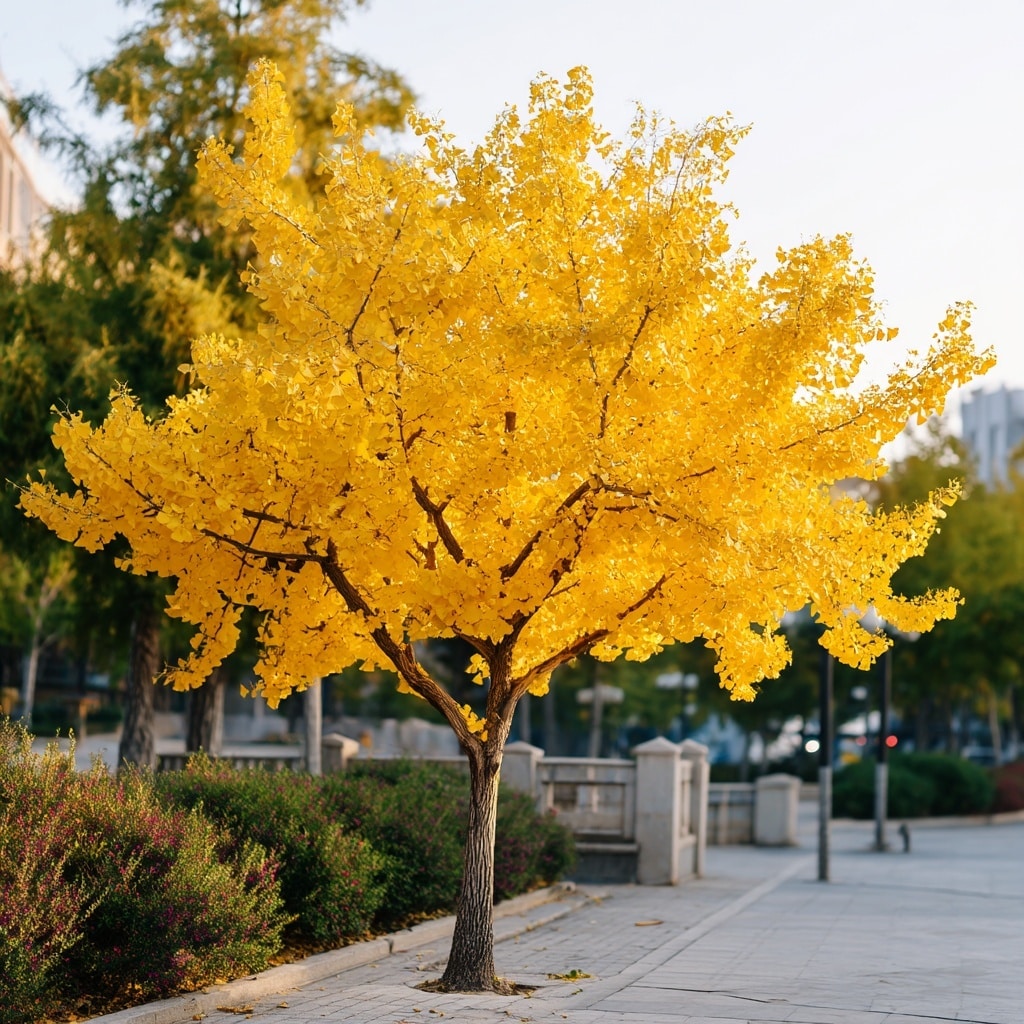
For a fall tree that adds both ancient history and golden color to your landscape, the ginkgo is a unique and striking choice. With its distinctive fan-shaped leaves, the ginkgo turns a brilliant buttery yellow in autumn, often all at once—creating a carpet of color below as the leaves drop in a single dramatic sweep.
Dating back over 270 million years, the ginkgo is often called a “living fossil.” For landscaping, it’s best to plant a male cultivar like ‘Autumn Gold’ or ‘Goldspire’ to avoid the foul-smelling fruit that female trees produce.
- Hardiness Zones: 4–9
- Mature Size: 14–40 ft tall, 6–30 ft wide
- Best For: Golden fall color, low-maintenance urban planting
5. Redbud (Cercis canadensis)
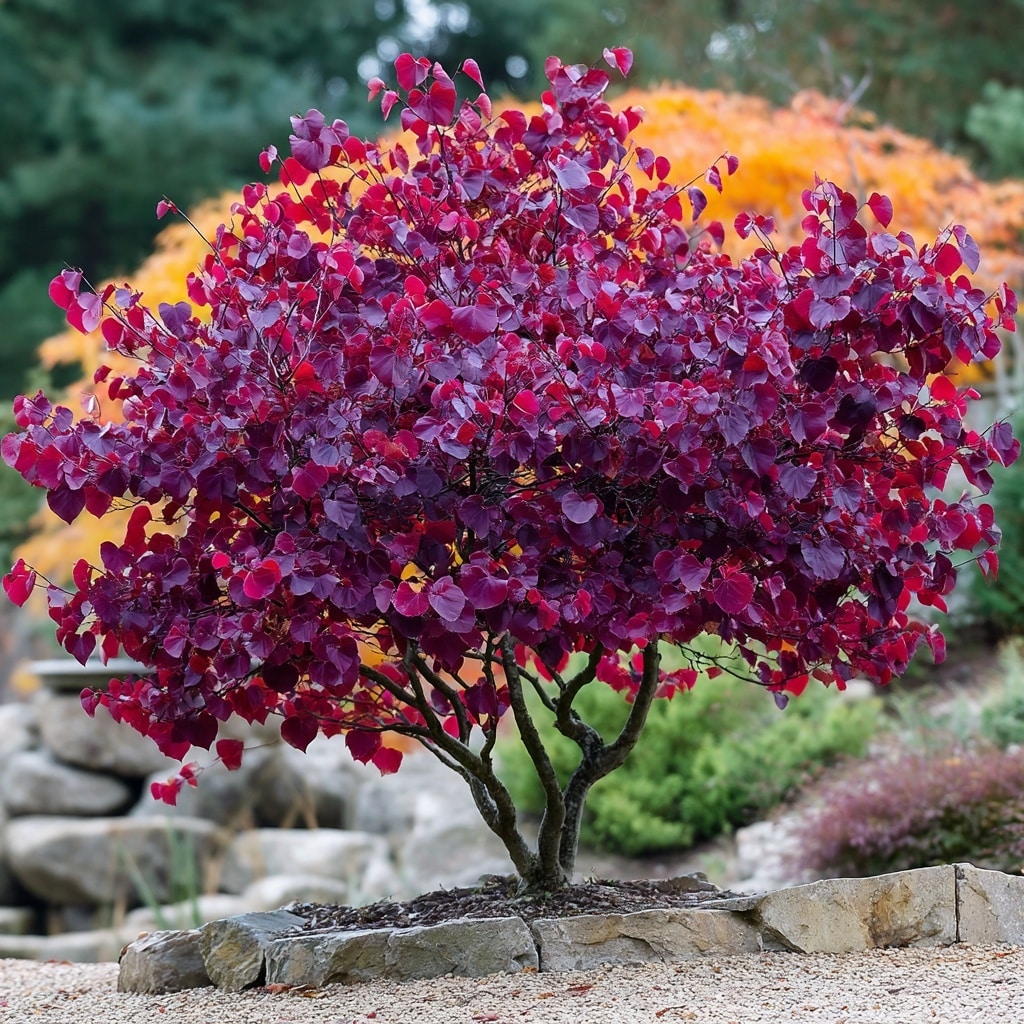
While redbuds are best known for their striking lavender-pink blossoms in early spring, they also make an eye-catching fall tree thanks to their heart-shaped leaves, which turn rich shades of yellow, bronze, or burgundy in autumn. This multi-season interest makes redbud a favorite among landscape designers.
Compact and ornamental, redbuds are perfect for small gardens or as understory trees. Cultivars like ‘Forest Pansy,’ ‘Merlot,’ and ‘Flame Thrower’ not only deliver beautiful fall foliage but also offer unique leaf colors throughout the growing season.
- Hardiness Zones: 5–9
- Mature Size: 15–30 ft tall, 20–35 ft wide
- Best For: Small yards, seasonal color variety
6. Japanese Maple (Acer palmatum)
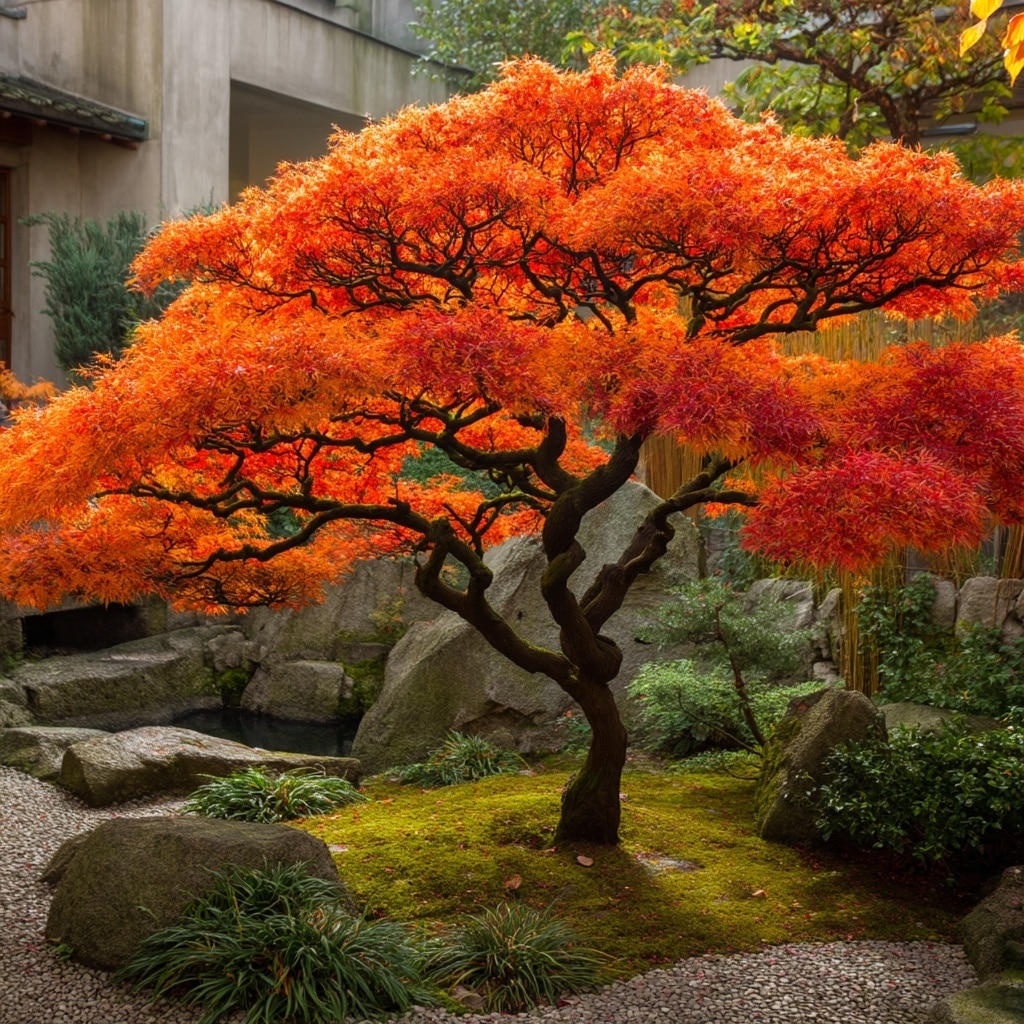
Graceful and compact, the Japanese maple is a beloved fall tree that brings elegance to any garden. Known for its finely cut leaves and sculptural form, this tree offers stunning autumn shades ranging from deep crimson to fiery orange, depending on the cultivar.
Perfect for patios, entryways, or focal points in smaller landscapes, Japanese maples thrive in partial shade and well-drained soil. Varieties like ‘Tamukeyama’ provide consistent red foliage throughout the season, while others shift hues dramatically in fall.
- Hardiness Zones: 5–8
- Mature Size: 6–20 ft tall, 8–15 ft wide
7. Crape Myrtle (Lagerstroemia indica)
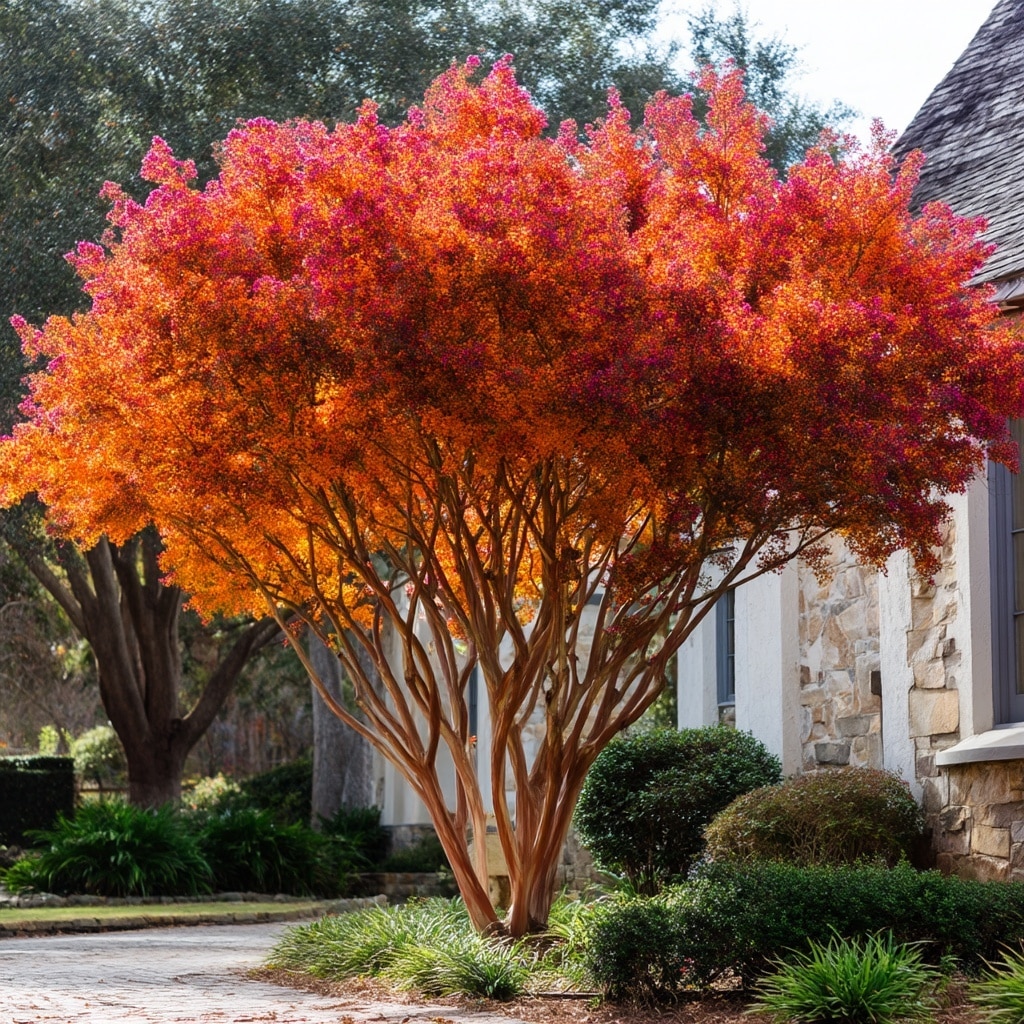
While it’s often celebrated for its summer blooms, the crape myrtle also makes a wonderful fall tree, offering rich hues of orange, red, and burgundy as the season changes. Its multi-season appeal and graceful branching habit make it a standout in warmer climates.
Allowing the tree to grow into its natural form (instead of heavy pruning) enhances both its fall color and overall shape. Cultivars like ‘Acoma,’ ‘Biloxi,’ and ‘Natchez’ are particularly noted for their vibrant foliage and resistance to powdery mildew.
- Hardiness Zones: 7–10
- Mature Size: 10–25 ft tall, 10–20 ft wide
- Best For: Southern gardens, long-lasting seasonal color
8. Paperbark Maple (Acer griseum)

For gardeners seeking a fall tree that offers four-season interest, the paperbark maple is a top-tier choice. Its rich red-orange fall foliage is only part of the charm—the tree’s signature feature is its cinnamon-colored, peeling bark that reveals layers of smooth copper beneath, adding texture and warmth to winter landscapes.
Although it grows slowly, the paperbark maple’s compact size and refined shape make it ideal for smaller yards or as a specimen tree. It’s also relatively low-maintenance and resistant to most pests and diseases.
- Hardiness Zones: 4–8
- Mature Size: 20–30 ft tall, 15–25 ft wide
- Best For: Year-round visual interest, compact landscapes
9. Kousa Dogwood (Cornus kousa)

If you’re looking for a fall tree that offers spring flowers, summer fruit, and vivid autumn foliage, the Kousa dogwood checks every box. In fall, its leaves turn deep red to purple, while the small red fruits linger into early winter, adding ornamental value and attracting birds.
Unlike native dogwoods, Kousa varieties are more resistant to disease and adapt well to different soil types. Their manageable size and layered branching make them perfect for foundation plantings or mixed borders in smaller yards.
- Hardiness Zones: 5–8
- Mature Size: 15–25 ft tall, up to 15 ft wide
- Best For: Multi-season interest, disease resistance
10. River Birch (Betula nigra)
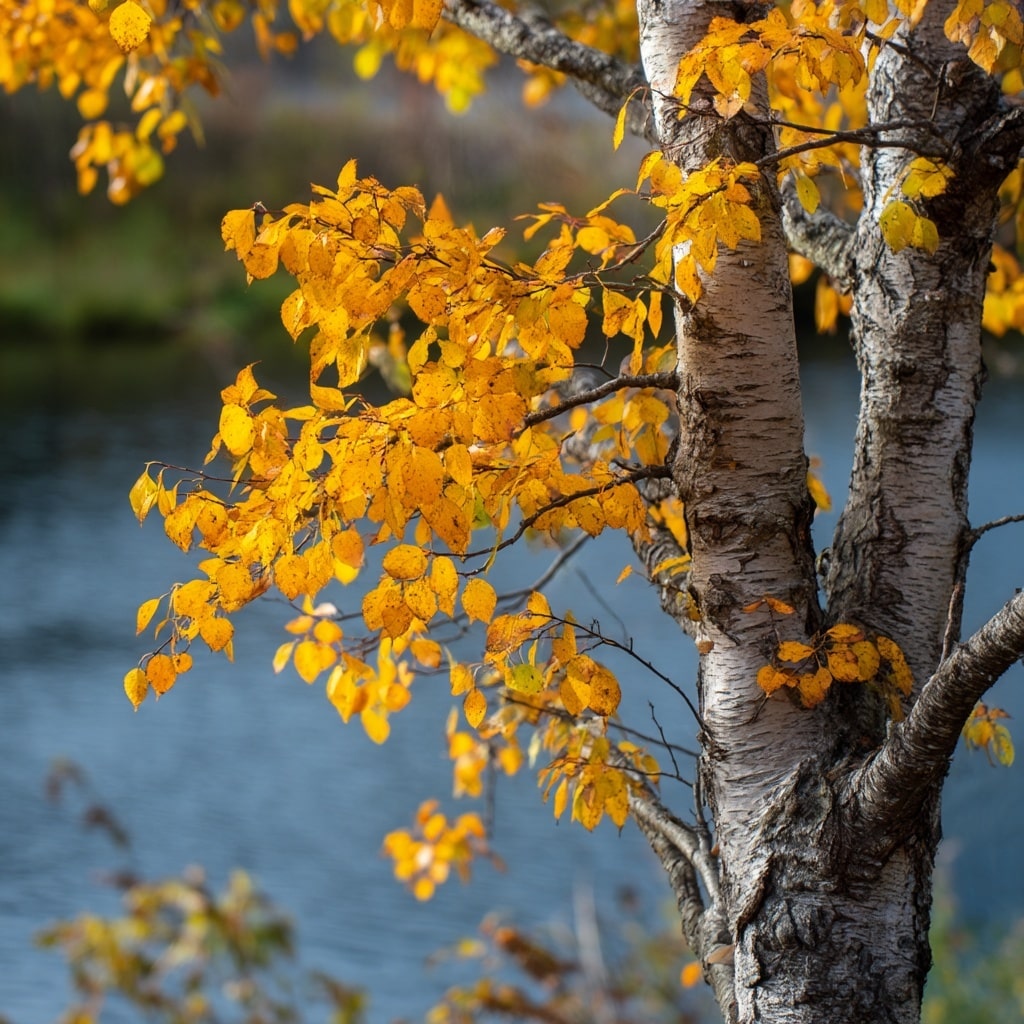
The river birch may not be the flashiest fall tree, but its golden-yellow autumn leaves and striking, peeling bark offer subtle charm and texture to the landscape. Especially suited for moist or poorly drained soils, this tree thrives where others struggle, making it a practical choice for challenging spots.
Its exfoliating bark—ranging from creamy tan to salmon-pink—provides year-round interest, particularly in winter when the branches are bare. The cultivar ‘DuraHeat’ is a popular selection known for its compact form and heat tolerance.
- Hardiness Zones: 4–9
- Mature Size: 40–50 ft tall, 25–40 ft wide
- Best For: Wet areas, bark interest, golden fall foliage
11. Black Gum (Nyssa sylvatica)
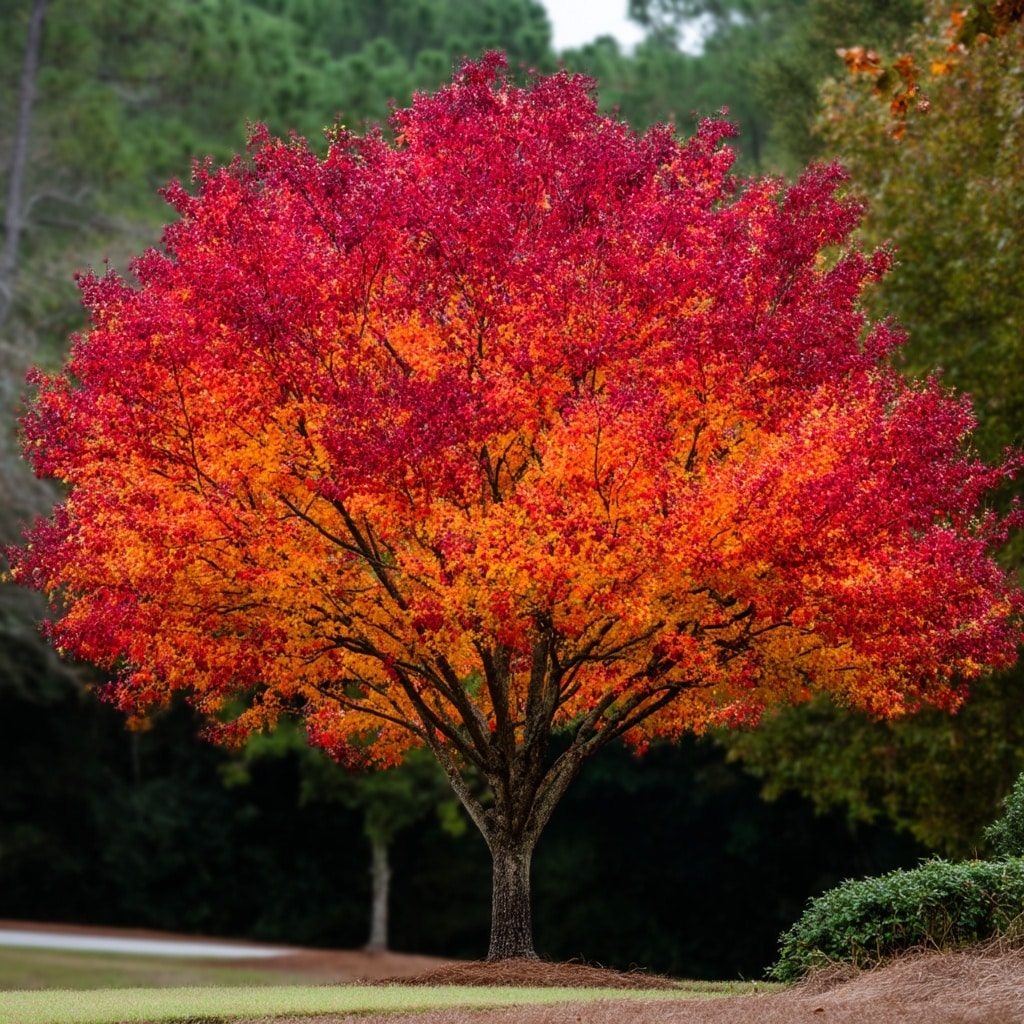
Often underrated, the black gum is a spectacular fall tree that brings deep red, orange, and even purple tones to the autumn landscape. Its glossy green summer leaves transition into one of the most vibrant and varied color displays of any native tree.
Also known as tupelo, black gum has a strong, upright form and thrives in both wet and dry soils. The cultivar ‘Green Gables’ is prized for its symmetrical shape and resistance to leaf spot, making it a low-maintenance option for homeowners seeking bold fall color.
- Hardiness Zones: 3–9
- Mature Size: 30–60 ft tall, 20–40 ft wide
- Best For: Native landscapes, bold autumn foliage
12. Oakleaf Hydrangea (Hydrangea quercifolia)

Though technically a large shrub, the oakleaf hydrangea earns its place among the best fall tree alternatives. Its large, lobed leaves resemble those of an oak and put on a dazzling display in fall, turning deep shades of burgundy, mahogany, and rust. It’s one of the few hydrangeas that delivers both seasonal color and floral interest.
The creamy white flower clusters that bloom in summer gradually fade to pink and then tan, remaining on the plant as dried blossoms into winter. Its compact form makes it ideal for small gardens or as a layered border plant beneath taller trees.
- Hardiness Zones: 4–9
- Mature Size: 5–10 ft tall and wide
- Best For: Small spaces, dramatic fall foliage, long bloom period
Conclusion
Adding a fall tree to your landscape is one of the most rewarding ways to celebrate the changing seasons. Whether you prefer the fiery reds of a maple, the golden glow of a ginkgo, or the multi-season beauty of serviceberry and dogwood, there’s a perfect tree to suit your space, climate, and garden style. Many of these selections offer more than just fall color—they bring structure, shade, flowers, and wildlife value all year long.
As you plan your autumn garden, consider how these trees will complement existing plants, thrive in your local conditions, and bring joy for years to come.

